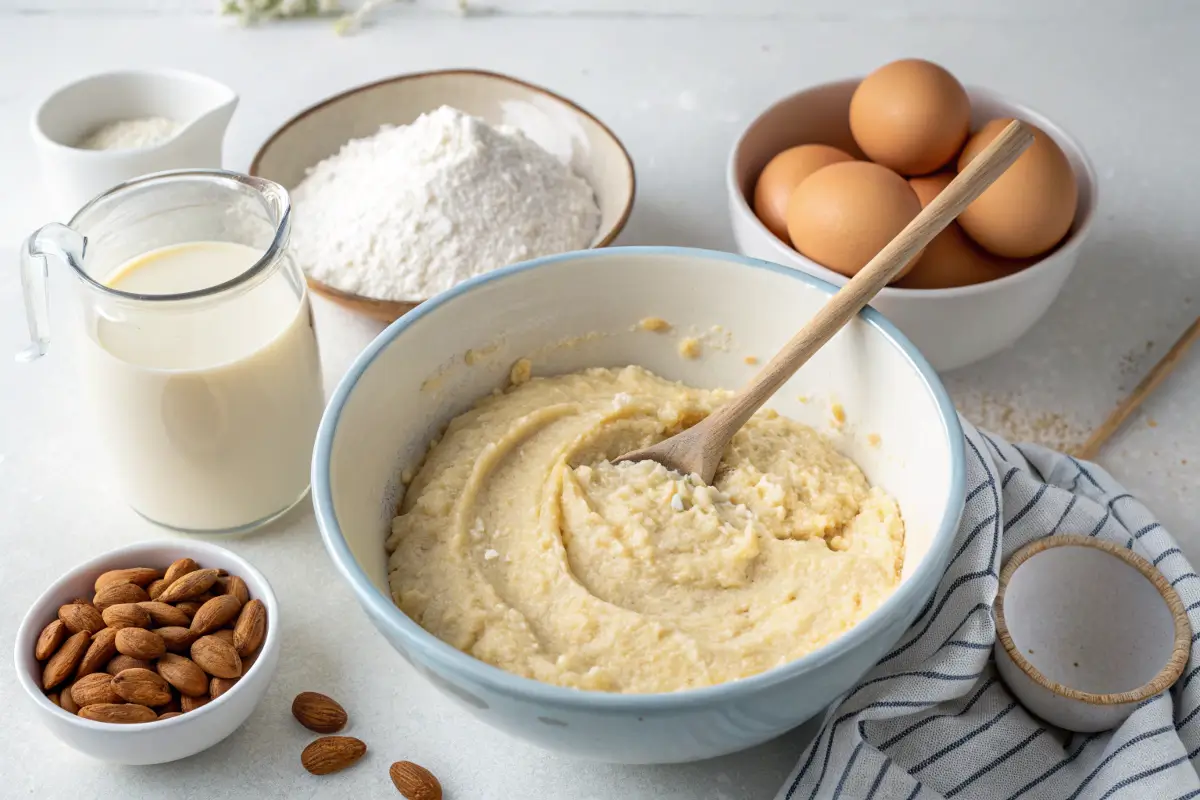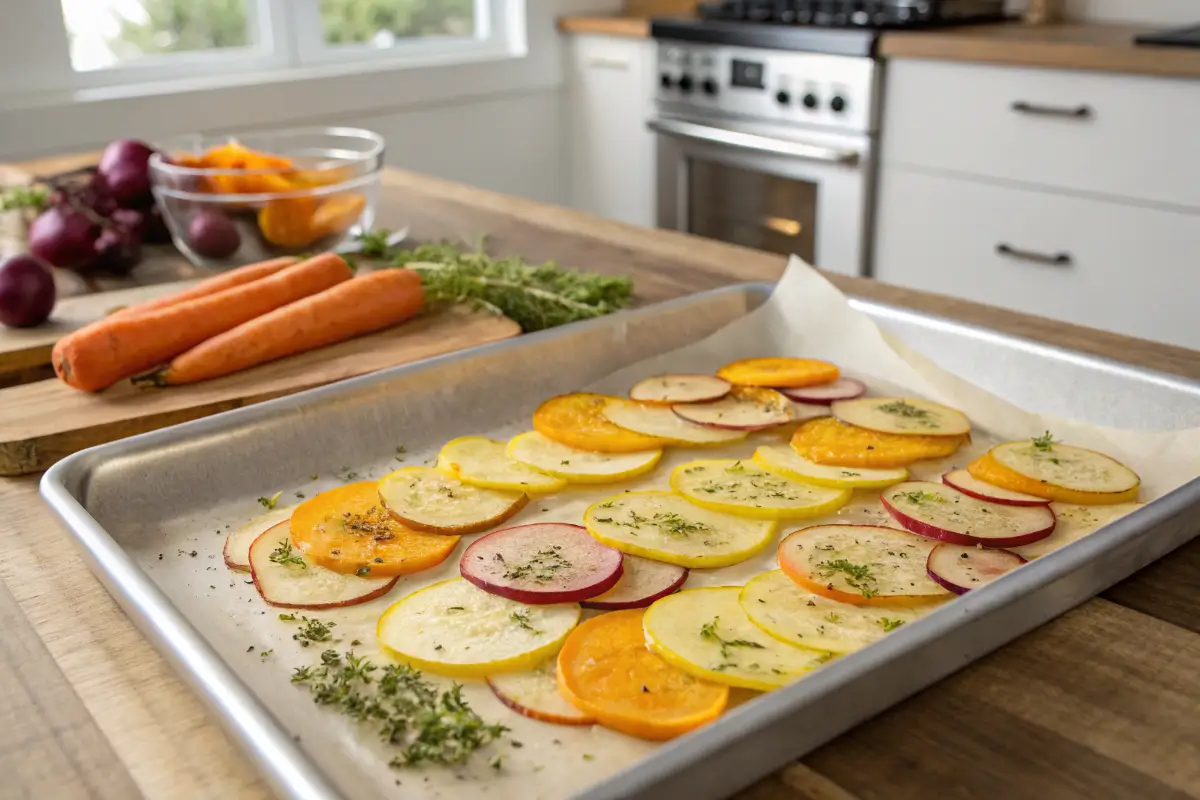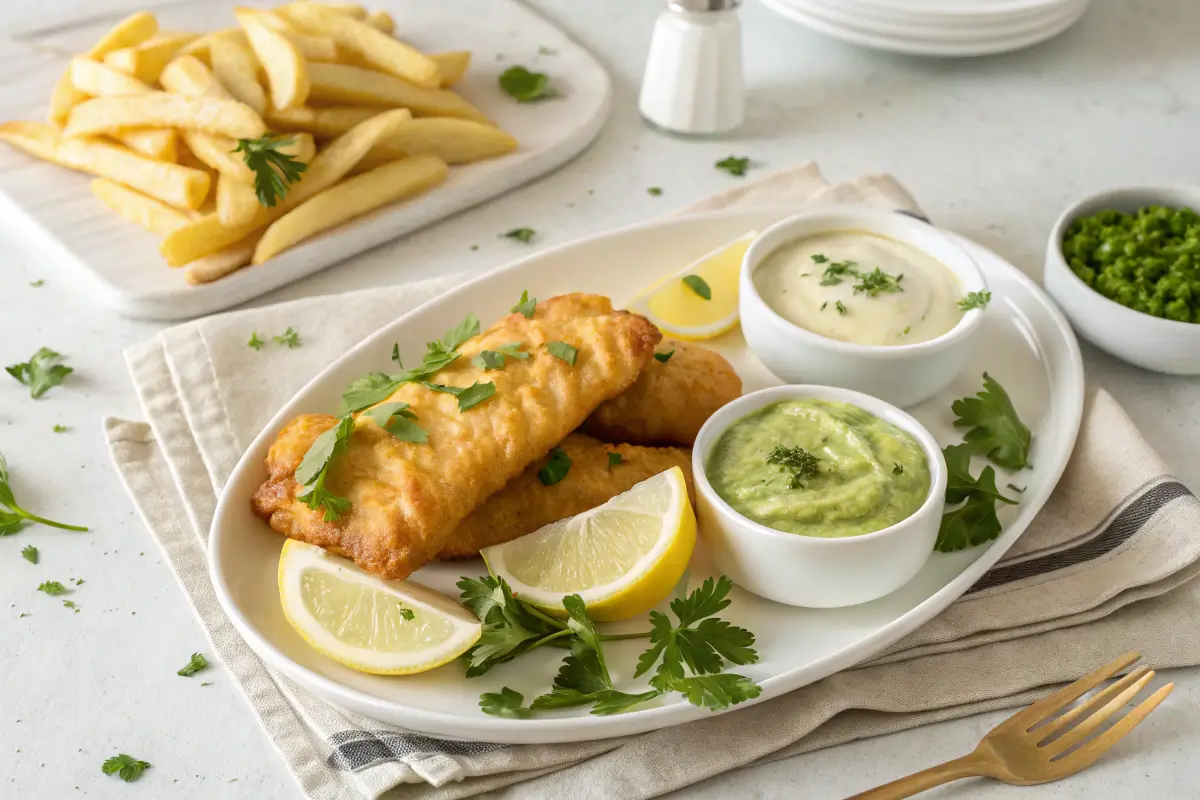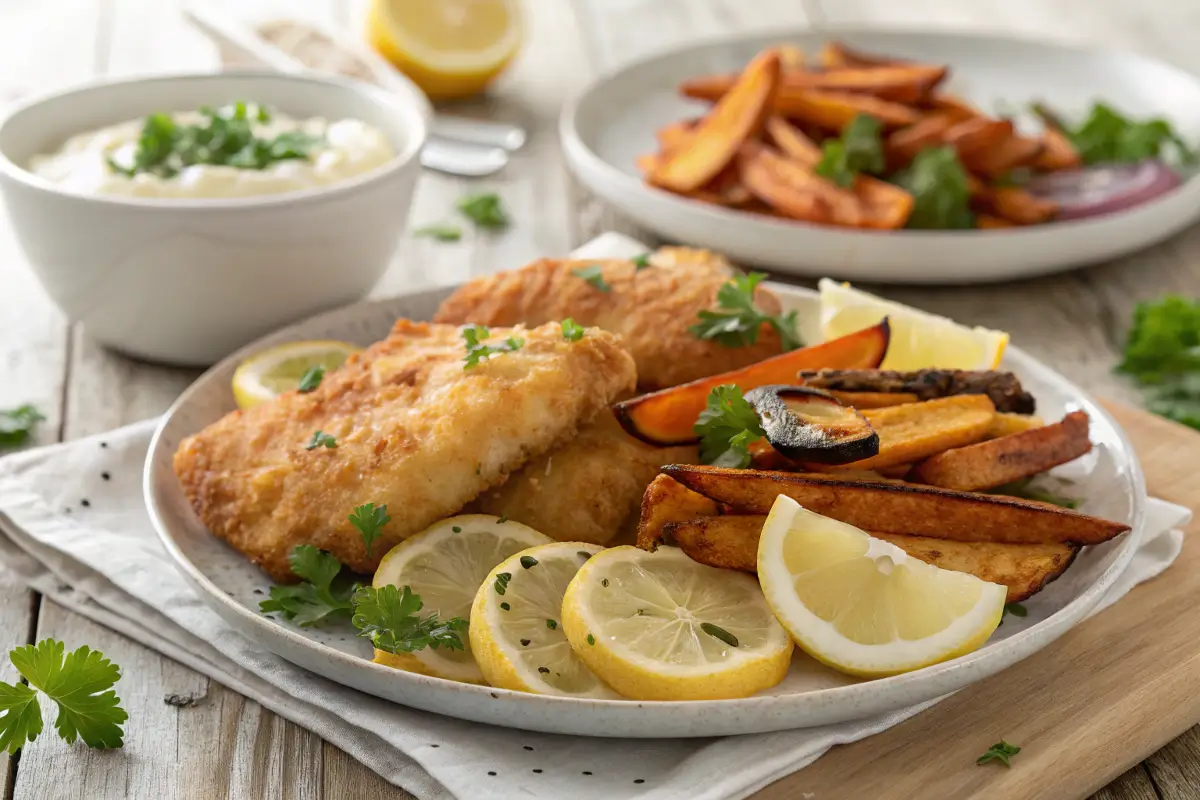If you’re on a lectin-free diet but craving the classic comfort of crispy fish and chips, this recipe has you covered. Combining traditional flavors with healthier, gut-friendly ingredients, this dish is perfect for those seeking to reduce inflammation and support better digestion. In this article, you’ll explore the essentials of a lectin-free fish and chips recipe, including step-by-step instructions, ingredient swaps, and expert tips to make it both delicious and healthy. Let’s dive in!
Introduction to Lectin-Free Cooking
What Are Lectins and Why Avoid Them?
Lectins are a type of protein found in many plant-based and some animal-based foods. While they occur naturally, some research suggests that consuming high levels of lectins can irritate the gut lining and contribute to inflammation. Foods like grains, legumes, and nightshade vegetables are particularly high in lectins, making them a no-go for individuals on a lectin-free diet.
For people with digestive sensitivities or autoimmune issues, cutting out lectins may alleviate symptoms and promote better overall health. Even for those without sensitivities, reducing lectin consumption can be a step toward mindful, anti-inflammatory eating.
The Growing Popularity of Lectin-Free Diets
The rise of the lectin-free diet can be attributed to its focus on whole, unprocessed foods that support gut health. Championed by health experts like Dr. Steven Gundry, the approach encourages replacing lectin-rich foods with nutrient-dense alternatives like almond flour, coconut flour, and non-starchy vegetables.
As more people discover the potential benefits—like reduced bloating, improved energy, and weight management—the demand for creative lectin-free recipes has skyrocketed.
How Fish and Chips Fits into a Lectin-Free Lifestyle
Classic fish and chips may feel like forbidden territory on a lectin-free diet, but it doesn’t have to be! By swapping out wheat flour for lectin-free batter ingredients and ditching potatoes for gut-friendly vegetables, you can recreate this beloved dish in a way that aligns with your health goals. This recipe maintains the crispy, golden exterior and flaky fish you love—without compromising on flavor or wellness.
The Essentials of a Lectin-Free Fish and Chips Recipe
Key Ingredients for a Perfect Lectin Free Fish and Chips Recipe
Crafting the perfect lectin free fish and chips recipe starts with choosing ingredients that align with a lectin-free diet. Instead of traditional wheat flour, opt for alternatives like almond flour or coconut flour, which are gut-friendly and free of harmful lectins. These flours not only mimic the crispiness of a traditional batter but also add a subtle nutty flavor to the dish.
When it comes to frying, selecting the right oil is crucial. Coconut oil or avocado oil is ideal due to their high smoke points and health benefits. These oils ensure your fish and chips remain crispy without compromising your health.
For the chips, swap out starchy potatoes with alternatives like rutabaga or parsnips. These vegetables are lectin-free and roast beautifully, offering a satisfying crunch without the inflammatory effects of nightshades.
The Health Benefits of This Lectin Free Recipe
This recipe is more than just a tasty alternative to traditional fish and chips—it’s packed with health benefits. By going lectin-free, you reduce inflammation, support gut health, and avoid blood sugar spikes caused by refined flours and starchy potatoes.
Moreover, using fish like cod or haddock provides a lean protein source rich in omega-3 fatty acids, which promote heart and brain health. Paired with low-inflammatory ingredients like coconut flour and healthy oils, this dish delivers both flavor and nutrition.
For related recipes incorporating similar healthy swaps, check out Baking with Almond Flour Secrets.
Step-by-Step Instructions for Cooking Lectin-Free Fish and Chips Recipe
Preparing Ingredients for a Healthy Fish and Chips Recipe
Before diving into the recipe, gather the necessary tools and ingredients. You’ll need a mixing bowl, a frying pan or deep fryer, parchment paper, and a baking sheet for roasting the chips. For the batter, stock up on almond flour, coconut milk, and eggs, while ensuring you have fresh fish fillets and your choice of lectin-free vegetables.
Creating the Lectin-Free Batter for Crispy Fish

The batter is the cornerstone of this lectin free fish and chips recipe. In a bowl, mix almond flour with a pinch of baking soda, salt, and black pepper. Add eggs and a splash of coconut milk to create a thick, smooth consistency. This mixture not only adheres well to the fish but also crisps up nicely when fried.
Cooking the Perfect Fish Fillets
Heat coconut or avocado oil in a frying pan over medium-high heat. Dip the fish fillets into the batter, ensuring an even coat, and carefully place them in the pan. Fry each side for 3-4 minutes until golden brown and crispy. To avoid overcrowding, fry in batches if needed.
Making Delicious Lectin-Free Vegetable Chips

For the chips, cut your chosen vegetables into even slices or wedges. Toss them with avocado oil, salt, and pepper, then spread them evenly on a parchment-lined baking sheet. Roast at 425°F (220°C) for 25-30 minutes, flipping halfway through to ensure an even crisp.
Plating and Presentation Tips

Once everything is cooked, plate your lectin free fish and chips recipe on a rustic serving tray. Garnish with fresh lemon wedges and a sprinkle of parsley. Serve with lectin-free dipping sauces like homemade aioli or avocado crema for added flair.
Variations of Lectin-Free Fish and Chips Recipe
Baked vs. Fried Options for a Lectin Free Dinner
Not everyone loves frying, and that’s okay! You can bake your lectin free fish and chips recipe for a lighter version. Simply preheat your oven to 400°F (200°C), place the battered fish on a greased baking sheet, and bake for about 15-20 minutes, flipping halfway through. The result? A crispy, golden crust without the added calories from frying.
For the chips, roasting them in the oven with a drizzle of avocado oil gives them a crunchy texture and enhances their natural sweetness. Baking is also an excellent option if you’re looking to minimize kitchen mess and oil usage.
Incorporating Other Lectin-Free Vegetables
Why stop at parsnips or rutabaga? This recipe is versatile enough to include other lectin-free veggies like zucchini, turnips, or even cauliflower. Thinly slice or cut these into chip-like shapes, season them well, and roast or air-fry for a delightful twist.
Each vegetable brings its unique flavor and texture to the dish. For instance, zucchini chips add a mild sweetness, while turnips offer a slightly peppery bite. Feel free to experiment and find the perfect combination for your palate.
Dipping Sauces: Lectin-Free Condiments
A good dipping sauce elevates any dish, and this one is no exception. Pair your fish and chips with a homemade avocado-based aioli or a tangy yogurt dressing. Both options are lectin-free and add a creamy contrast to the crispy fish and chips.
For more lectin-free dipping sauce ideas, check out Baking with Almond Flour Secrets, which includes recipes for almond-based dips and spreads.
Expert Tips for Perfect Lectin-Free Fish and Chips Recipe
How to Prevent a Soggy Batter
A soggy batter can ruin the texture of your lectin free fish and chips recipe. To avoid this, always pat your fish fillets dry with paper towels before dipping them into the batter. Ensuring the oil is at the right temperature (around 350°F or 175°C) also prevents the batter from absorbing too much oil.
Additionally, frying in small batches helps maintain the oil’s temperature and results in a crispier finish.
The Importance of Oil Temperature
Using the right oil at the correct temperature is a game-changer. Coconut oil or avocado oil, with their high smoke points, are perfect for frying fish and chips. Investing in a kitchen thermometer can help you keep the oil temperature consistent. If the oil is too cool, the batter will soak up excess grease; if too hot, it might burn before cooking through.
Storage and Reheating Tips
Leftovers? No problem! To store your fish and chips, let them cool completely, then place them in an airtight container. Reheat in the oven or air fryer at 375°F (190°C) to restore their crispy texture.
For additional tips on handling leftovers, you might enjoy browsing Healthy Broccoli and Cauliflower Recipes, which includes reheating and storage hacks for vegetable-based dishes.
Frequently Asked Questions
Can I Use Coconut Flour for the Batter?
Absolutely! Coconut flour is a fantastic option for a lectin free fish and chips recipe. It’s light, gluten-free, and adds a mild sweetness to the batter. Keep in mind, though, that coconut flour absorbs more liquid than other flours, so you may need to adjust the amount of liquid or eggs in your recipe.
What Is the Best Fish for Lectin-Free Recipes?
The best fish for this dish are white fish fillets like cod, haddock, or pollock. These options are firm, mild in flavor, and hold up well during frying or baking. Make sure to choose sustainably sourced fish for a more eco-friendly meal.
Are Sweet Potatoes Lectin-Free?
Yes, sweet potatoes are lectin-free, making them a great substitute for traditional potato chips in this recipe. They’re naturally sweet and roast beautifully, offering a healthier alternative to regular fries.
How Do I Make It Keto-Friendly?
To make this recipe keto-friendly, simply use almond flour for the batter and pair it with low-carb veggies like zucchini or turnips for the chips. This way, you keep the meal delicious and aligned with your keto goals.
Conclusion: Enjoying Healthy and Delicious Comfort Food
A lectin free fish and chips recipe is the perfect way to enjoy a classic dish while prioritizing your health. By swapping out traditional ingredients with lectin-free alternatives like almond flour and coconut oil, you can recreate this comfort food in a gut-friendly way. Whether you choose to fry, bake, or experiment with different vegetables, this recipe proves that eating healthy doesn’t mean sacrificing flavor.
Nutritional Benefits of Lectin-Free Fish and Chips recipe
A Healthier Alternative to Traditional Recipes
The lectin free fish and chips recipe isn’t just a dietary compromise—it’s a significant upgrade in nutrition and health benefits. By replacing conventional ingredients with lectin-free options like almond flour, coconut flour, and non-starchy vegetables, this recipe significantly lowers inflammation potential while enhancing gut health.
Traditional fried fish and chips often rely on refined wheat flour and deep-fried potatoes, which can spike blood sugar and contribute to weight gain. In contrast, this lectin-free version uses nutrient-dense, gluten-free flours that support sustained energy and improved digestion.
Packed with Essential Nutrients
This recipe isn’t just delicious—it’s packed with nutrients. White fish such as cod or haddock is a fantastic source of lean protein and omega-3 fatty acids, which are essential for brain and heart health. Coconut oil and avocado oil, used for frying or roasting, are rich in healthy fats that promote cell function and energy.
The lectin-free chips, whether made from sweet potatoes, parsnips, or rutabaga, provide a wealth of vitamins and antioxidants. These vegetables are excellent sources of dietary fiber, which supports healthy digestion and keeps you feeling full longer.
Share Your Twist on the Recipe
Customizing Your Lectin-Free Fish and Chips Recipe
One of the best things about the lectin free fish and chips recipe is its versatility. You can easily tailor it to your taste or dietary needs. Experiment with different seasonings like paprika, garlic powder, or cayenne to enhance the batter’s flavor. If you’re feeling adventurous, add a pinch of turmeric for a golden hue and a boost of anti-inflammatory properties.
For chips, why not try an unexpected veggie like jicama or carrots? Each vegetable adds its unique taste and texture, allowing you to enjoy a new spin on this classic dish every time you make it.
Encourage Others to Join the Fun
Cooking isn’t just about food—it’s about creating memories. Share your version of this recipe with family or friends, and encourage them to try their own variations. Don’t forget to spread the joy by sharing your creations on social media or swapping ideas with fellow food lovers online.

